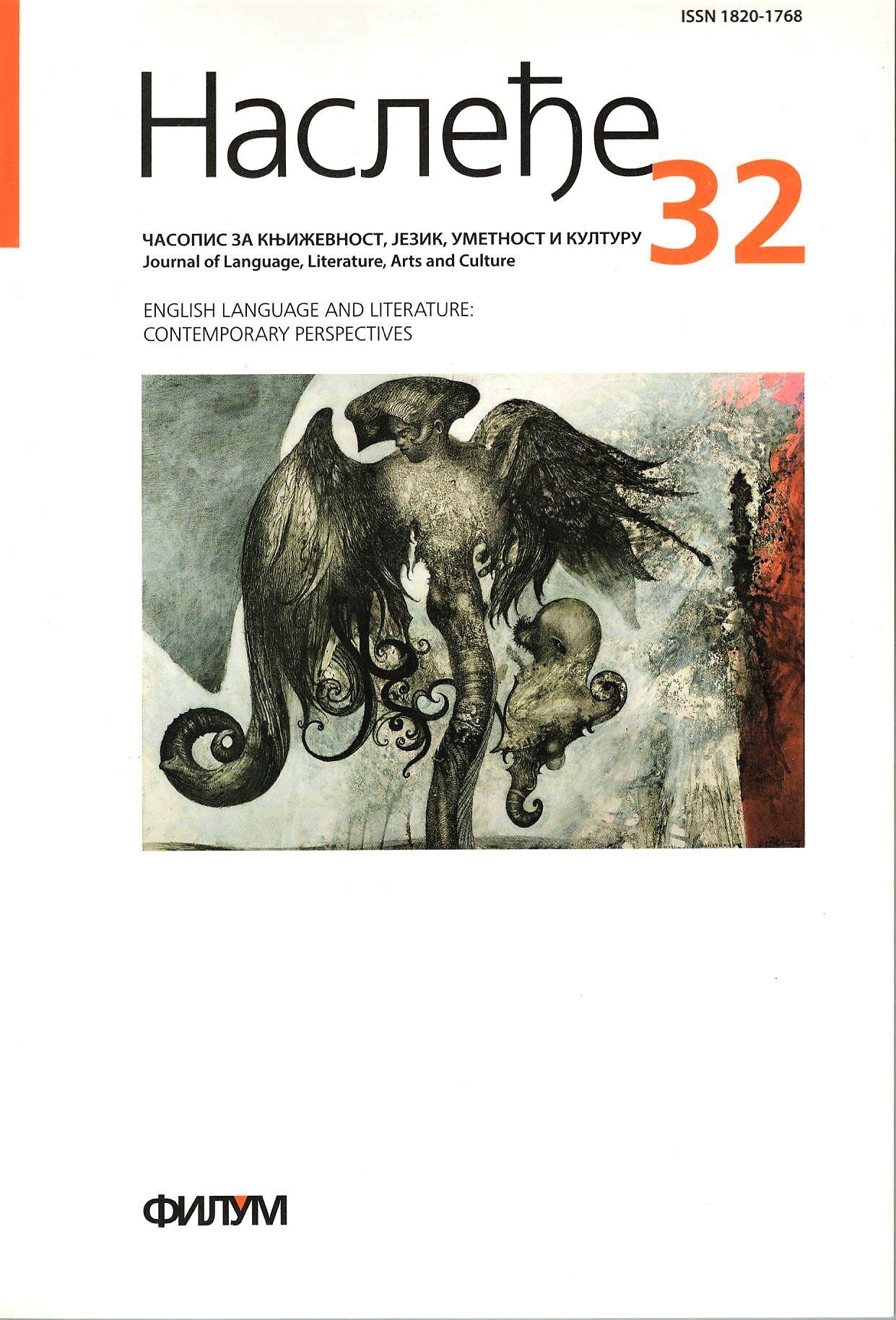POLISEMIJA LEKSEMA HOME U ENGLESKOM I DOM U SRPSKOM JEZIKU
Кључне речи:
polisemija, pojmovna metafora, pojmovna metonimija, engleski jezik, srpski jezik, kontrastivna analizaСажетак
Oslanjajući se na teoriju pojmovne metafore i teoriju pojmovne metonimije, u radu se kontrastivno analiziraju značenja leksema home u engleskom i dom u srpskom jeziku. Cilj rada je da se ustanove sličnosti i razlike između metaforičkih i metonimijskih proširenja značenja ovih leksema, što će istovremeno dati uvid u međujezičke i međukulturne razlike ova dva jezika. Analiza se zasniva na materijalu crpljenom iz jednojezičnih rečnika engleskog i srpskog jezika, kao i na korpusu savremenog engleskog jezika i savremenog srpskog jezika. Rezultati ukazuju na mnoge sličnosti kao što su metonimije sadržatelj za sadržaj i deo za celinu, te metafora institucija je dom, koje su otkrivene u oba jezika, ali i na nekolike razlike između značenja leksema home i dom, kao što su ona zasnovana na metaforama mesto odakle neko potiče je dom, prijatno mesto je dom i stanište je dom. Naposletku, mogu se uočiti i određena značenja koja su u engleskom jeziku realizovana kroz metaforičke izraze koji sadrže leksemu home, dok su ista ta značenja u srpskom jeziku realizovana u metaforičkim izrazima sa leksemom kuća (metafora sportski klub je dom).
Референце
Barcelona 2000: A. Barcelona, On the plausibility of claiming a metonymic motivation for conceptual metaphor, in: A. Barcelona (ed), Metaphor and Metonymy at the Crossroads, Berlin: Mouton de Gruyter, 31-58.
Crossley, Salsbury, McNamara 2010: S. Crossley, T. Salsbury, D. McNamara, The Development of Polysemy and Frequency Use in English Second Language Speakers, Language Learning, 60/3, 573-605.
Cruse 2011: D. A. Cruse, Meaning in language: an introduction to semantics and pragmatics (3rd ed.), Oxford: Oxford University Press.
Đurović 2013: S. Đurović, Sinonimski par kuća: dom u srpskom jeziku, Srpski jezik,XVIII, 329-338.
Evans, Green 2006: V. Evans, M. Green, Cognitive linguistics: an introduction, London: Routledge.
Johnson 1987: M. Johnson, The body in the mind: The bodily basis of reason and imagination, Chicago: University of Chicago Press.
Kövecses 2002: Z. Kövecses, Metaphor. A Practical Introduction, Oxford: Oxford University Press.
Kövecses, Radden 1998: Z. Kövecses, G. Radden, Metonymy: developing a cognitive linguistic view, Cognitive Linguistics, 9/7, 37-77.
Lakoff 1987: G. Lakoff, Women, fire, and dangerous things, Chicago: Chicago University Press.
Lakoff, Johnson 1980: G. Lakoff, M. Johnson, Metaphors we live by, Chicago: Chicago University Press.
Lakoff, Turner 1989: G. Lakoff, M. Turner, More than cool reason, Chicago: University of Chicago Press.
Marković 1991: R. Marković, Grananje značenja reči koje označavaju kuću i njene delove, Naš jezik, 29/1-2, 55-76.
Pragglejaz Group 2007: Pragglejaz Group, MIP: A Method for Identifying
Metaphorically Used Words in Discourse, Metaphor and Symbol, 22/1, 1-39.
Radden 2000: G. Radden, How metonymic are metaphors?, in: A. Barcelona (ed), Metaphor and Metonymy at the Crossroads, Berlin: Mouton de Gruyter, 93-105.
Radden, Kövecses 1999: G. Radden, Z. Kövecses, Towards a theory of metonymy, in: K.-U. Panther & G. Radden (eds), Metonymy in Language and Thought, Amsterdam: John Benjamins, 17-59.
Radić-Bojanić, Halupka-Rešetar 2014a: B. Radić-Bojanić, S. Halupka-Rešetar, Polisemija leksema house u engleskom i kuća u srpskom jeziku, u: M. Kovačević (ur.), Višeznačnost u jeziku, knjiga I, Kragujevac: FILUM, 333-344.
Radić-Bojanić, Halupka-Rešetar 2014b: B. Radić-Bojanić, S. Halupka-Rešetar, Višeznačnost leksema door i window u engleskom i vrata i prozor u srpskom jeziku, u: I. Živančević Sekeruš i N. Majstorović (ur.), Susret kultura, Novi Sad: Filozofski fakultet, 347-358.
Ristić, Lazić-Konjik 2012: S. Ristić, I. Lazić-Konjik, Dom u srpskom jeziku. Rad izložen na VI EUROJOS konferenciji Koncepty: DOM, EUROPA, WOLNOŚĆ, PRACA, HONOR w aksjosferze Słowian i ich sąsiadów, 21-23.11.2012. ‹http://rastko.rs/rastko/delo/14705›. 10.2.2014.
Sweetser 1986: E. E. Sweetser, Polysemy vs. Abstraction: Mutually Exclusive or Complementary?, Proceedings of the Twelfth Annual Meeting of the Berkeley Linguistics Society, 528-538.
Ungerer, Schmid 2013: F. Ungerer, H-J. Schmid, An Introduction to Cognitive Linguistics (2nd ed.), London: Routledge.
Longman Dictionary of Contemporary English 2009, 5th edition, Harlow: Pearson Education. ‹http://www.ldoceonline.com›. 15.12.2014.
Macmillan English Dictionary for Advanced Learners 2007, 2nd edition, Macmillan Education, Oxford. ‹http://www.macmillandictionaries.com/about/med/›. 15.12.2014.
Nikolić 2007: M. Nikolić (ur.), Rečnik srpskoga jezika, Novi Sad: Matica srpska.
Oxford Advanced Learner’s Dictionary 2011, 8th edition, Oxford: Oxford University Press. ‹http://oald8.oxfordlearnersdictionaries.com›. 15.12.2014.
British National Corpus, ‹http://www.natcorp.ox.ac.uk/using/index.xml?ID=simple›. 15.12.2014.
Korpus savremenog srpskog jezika, ‹http://www.korpus.matf.bg.ac.rs/prezentacija/korpus.html›. 15.12.2014.






